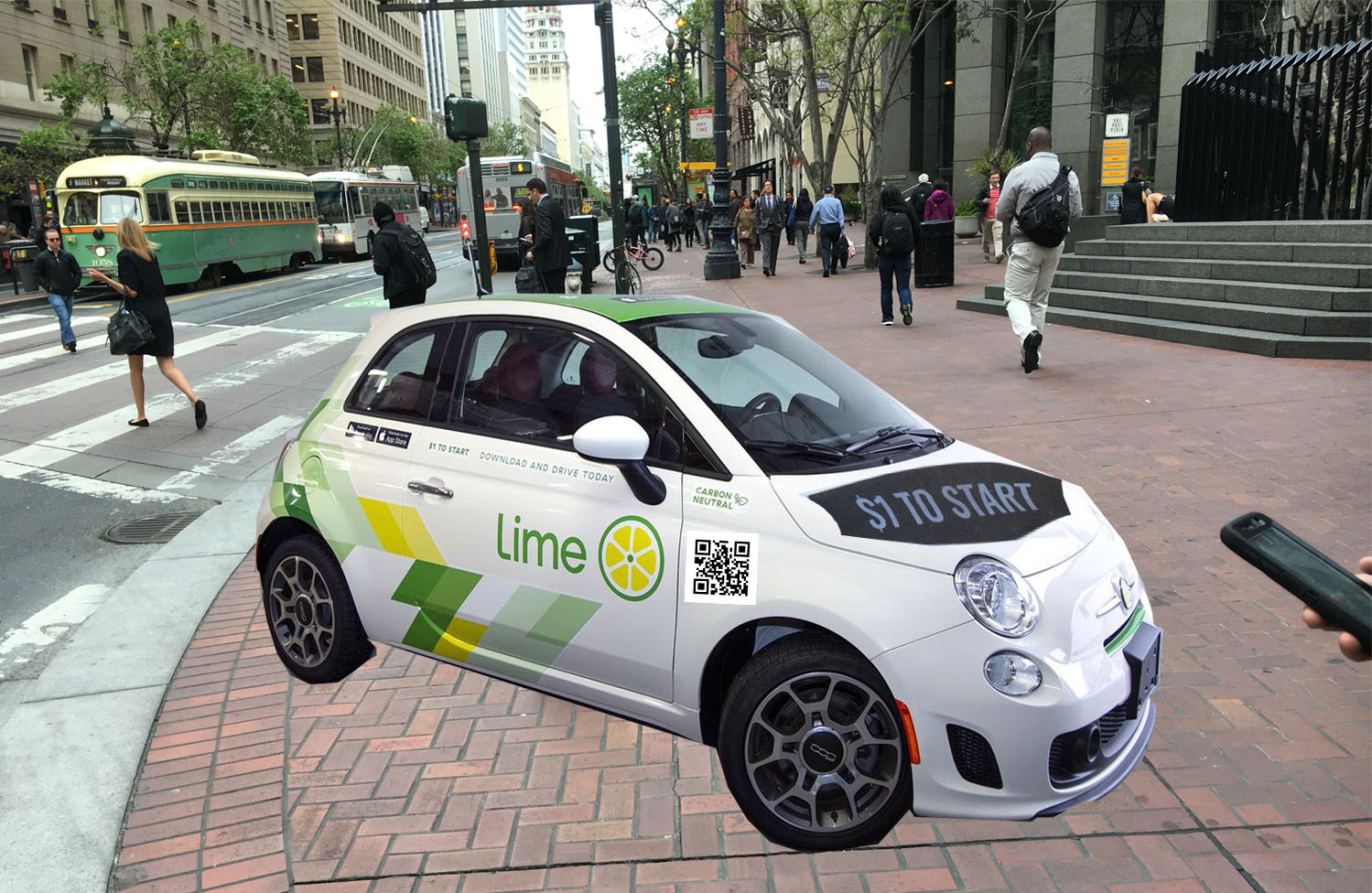I can’t begin to tell you how frustrating it is to walk down the streets of Los Angeles and feel like I’m playing a game of Frogger when I see e-scooters zipping past me. Is it a Bird, is it a spin, was it a Lime? The headphone-clad hipsters ride by so rapidly that I don’t have enough time to discern the shared scooters apart. Over the last few months, several startups have left thousands of electric scooters on the sidewalks of cities across the US, allowing anyone with the company’s respective app to gain access to a scooter ride.
Experts have called this the age of “micro-mobility,” a time where pedal-assisted bicycles and electric scooters are quickly becoming the American pedestrian’s preferred methods of transportation.
Lime, one of the more successful micro-mobility companies, currently valued at $3.3 billion, has been working on yet another form of alternative transportation, known internally as a “transit pod,” according to Bloomberg. Well, if you thought their dastardly but incredibly fun scooters and bicycles are overpowering city streets and thoroughfares, beginning this week, Lime users in Seattle will get to try out a “LimePod.”
Now, what is a “LimePod,” you might ask? Well, its obviously a 2018 Fiat 500 with the Lime logo slapped on all sides of the vehicle. According to TechCrunch, the company’s initial rollout will include 50 cars released into the wild streets of Seattle, Washington.
“LimePods, Lime’s car-sharing product line, a convenient, affordable, weather-resistant mobility solution for commuters. The ease of use of finding, unlocking, and paying for cars will be consistent with how riders use Lime scooters and e-bikes today.”
–Lime Spokesperson to TechCrunch
Hold the iPhone (AAPL), you’re telling me that rather than using the Lime app to scan and ride an electric scooter from my house to the grocery store, I can scan and unlock a literal car?
That is truly remarkable and absolutely crazy to me.
Sources say riding in a LimePod will cost the same $1 charged to start riding one of the company’s scooters and/bicycles, but the per-minute charge will cost around $0.40, or for you math-lovers, $24/hr. Let’s say, you need to run a quick errand across town and for one reason or another, you don’t have access to a car. Simply scan and unlock a LimePod, take care of business for twenty minutes and the ride will cost you no more than $8.
Last month, at the JD Power Automotive Roundtable, Lime announced their plans to develop “transit pods” that would travel at speeds as high as 40mph, while remaining energy efficient. I can almost guarantee that no one in attendance at the meeting could’ve predicted the company would rebrand hundreds of Fiat automobiles and offer them as “affordable, weather-resistant mobility solutions.” According to the Salt Lake Tribune, Lime hopes to have 1,500 cars in Seattle by early 2019, making the company the single largest free-floating car-sharing program in the country.
“It’s another important component to get around. The primary use-case we want to serve is longer-distance, higher-terrain, and bad weather.”
–Toby Sun, Chief Executive Officer, Lime
Fans of Lime scooters have long-supported the vehicles because of the enjoyability of riding around town, but also the money to be made from working as a “juicer” for the e-scooters. According to recent statistics, a “juicer” can make anywhere from $5 – $20 per scooter they charge and return back to its original location.
Lime has yet to comment on whether it will use juicers for its LimePods, given that it’s difficult to take several cars, albeit small, back to your home and “recharge them.” Lime CEO Toby Sun said the company is looking to translate most of its “operational abilities to car share,” but the fact of the matter is “you can’t pick up 20 cars and put them in the back of a van.”





